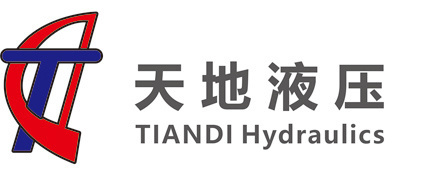GET THE LATEST NEWS FROM THE COMPANY
NEWS CATEGORY
Top 5 Benefits of Using Solenoid Directional Valves in Your System
Published:
2025-07-14 12:40
Top 5 Benefits of Using Solenoid Directional Valves in Your System
In the realm of industrial equipment and components, **solenoid directional valves** play a pivotal role in controlling fluid flow within various systems. As the demand for efficiency and precision in operations increases, understanding the advantages of these valves becomes essential for optimizing performance. This article delves into the **top five benefits** of integrating solenoid directional valves into your systems.
Table of Contents
- 1. Enhanced Control Over Fluid Flow
- 2. Increased Efficiency and Performance
- 3. Simplified Operation and Maintenance
- 4. Improved Safety Features
- 5. Versatility in Applications
- Frequently Asked Questions
- Conclusion
1. Enhanced Control Over Fluid Flow
Solenoid directional valves offer a remarkable level of **precision control** over fluid flow, which is critical in various industrial applications. By utilizing electromagnetic forces to manipulate the flow of liquids or gases, these valves enable operators to achieve exact positioning and flow rates.
In many systems, solenoid valves can change the direction of flow in a matter of milliseconds. This rapid response time allows for **dynamic adjustments**, making it possible to adapt to changing operational conditions. For industries that rely on precise fluid movement—like automation, manufacturing, and even automotive applications—this level of control is invaluable.
2. Increased Efficiency and Performance
Efficiency is a cornerstone of modern industry, and solenoid directional valves contribute significantly to optimizing system performance. By ensuring that the fluid flow is directed precisely where it's needed, these valves minimize waste and reduce energy consumption.
The design of solenoid valves allows for **quick actuation**, which not only speeds up processes but also enhances overall system responsiveness. For instance, in **hydraulic systems**, using solenoid valves can lead to reduced cycle times, enabling machines to operate faster without sacrificing performance. This increased efficiency translates into lower operational costs and improved productivity.
3. Simplified Operation and Maintenance
One of the standout features of solenoid directional valves is their **ease of use**. These valves typically come equipped with straightforward electrical connections that facilitate simple integration into control systems. Operators can easily manage and monitor the valves without extensive training, allowing for seamless implementation in various settings.
In terms of maintenance, solenoid valves are designed for durability and reliability. With fewer moving parts compared to traditional mechanical valves, there's a reduced risk of wear and tear, leading to lower maintenance requirements. Furthermore, many solenoid valves can be serviced quickly, minimizing downtime during routine checks or repairs.
4. Improved Safety Features
Safety is paramount in industrial environments, and solenoid directional valves contribute to enhanced safety protocols. These valves can be equipped with features such as **fail-safe mechanisms**, which ensure that the valve remains in a secure position in case of power loss. This is crucial in preventing accidents or spills that could occur if a valve were to inadvertently open.
Additionally, solenoid valves can be integrated with advanced sensor technology to monitor system health and performance continually. By providing real-time data, operators can proactively address potential issues before they escalate into safety hazards, thus creating a safer working environment.
5. Versatility in Applications
The applications of solenoid directional valves are vast and varied, making them an essential component across numerous industries. From **automotive manufacturing** to **water treatment plants**, these valves can be tailored to meet specific requirements.
In **pneumatic systems**, solenoid valves are used to control air flow, while in **hydraulic systems**, they manage the flow of liquids under pressure. Their versatility extends to **robotics**, **food processing**, and even **pharmaceutical production**, where precise flow control is critical for maintaining quality and compliance with regulations.
This adaptability not only simplifies the design process but also allows for innovative solutions tailored to unique operational challenges.
Frequently Asked Questions
1. What is a solenoid directional valve?
A solenoid directional valve is an electro-mechanical device that controls the flow direction of fluids in a system. It utilizes an electromagnetic coil to actuate a valve mechanism, allowing for precise fluid management.
2. How do solenoid valves work?
Solenoid valves function by using an electric current to create a magnetic field, which moves a plunger or armature within the valve. This movement opens or closes the valve, regulating fluid flow.
3. What are the common applications of solenoid directional valves?
Common applications include hydraulic and pneumatic systems, automation processes, water treatment, food and beverage processing, and automotive systems.
4. Are solenoid valves easy to maintain?
Yes, solenoid valves are generally easy to maintain due to their design, which features fewer moving parts. Routine maintenance typically involves checking for leaks and electrical connections.
5. What safety features do solenoid directional valves have?
Many solenoid valves include fail-safe mechanisms that keep the valve in a secure position during power loss. Additionally, they can be equipped with sensors for real-time monitoring and diagnostics.
Conclusion
Incorporating solenoid directional valves into your systems presents a myriad of benefits, including enhanced control over fluid flow, increased efficiency, simplified operation and maintenance, improved safety features, and unmatched versatility. These advantages make solenoid directional valves a crucial component in optimizing industrial applications, driving innovation, and ensuring seamless operations. By leveraging the unique capabilities of these valves, industries can not only improve their current processes but also pave the way for future advancements in technology and efficiency.
Solenoid directional valve
previous page
previous page
Related news

